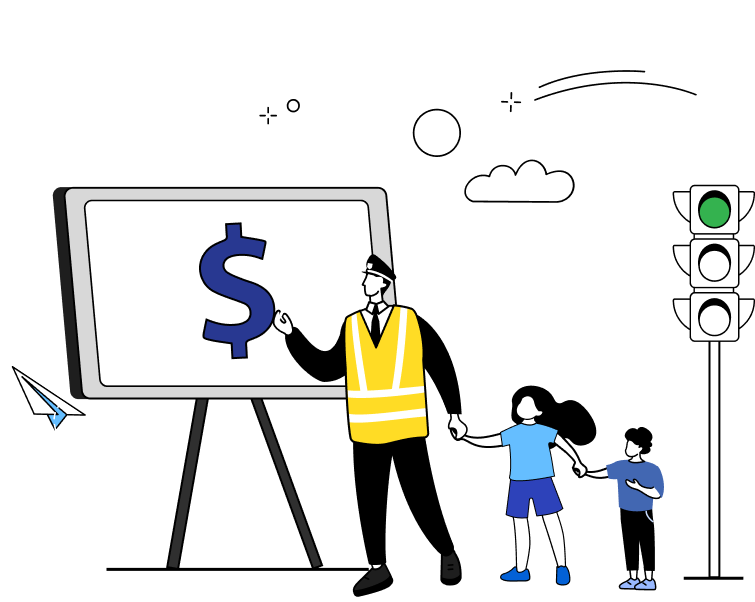It’s Never Too Early to Start Learning About Money.


Prepare to spend wisely this holiday season!
Set a budget, shop with a list, make it a potluck, and bundle online orders are a few of the many tips offered in Yahoo! Finance’s recent article on “50 Tips for Saving Money During the Holidays.”

Creating fun ways to learn about money early on helps lay the foundation for kids to develop strong money management and purposeful decision making skills.
The following are a variety of ways in which you can engage the youth in your life to start learning the ABCs of money:
Counting With Coins is a game from the U.S. Mint designed to familiarize kids with currency denominations. They can play games to:
Where to find: U.S. Mint


For kids K – 5th grade, Money Bingo lets kids put their coin knowledge to use, along with some math skills, to fill a virtual bingo card.
Where to find: ABCYa
Developed by the Federal Deposit Insurance Corporation (FDIC), the How Money Smart Are You? suite contains 14 games presented as an animated game show covering a variety of basic financial topics.
Some include
Kids can also earn certificates for each game they complete.
Where to find: Federal Deposit Insurance. Corporation (FDIC).


For kids and teens looking to get a realistic simulation of how it works to save and spend, Hit the Road is the game to play. Players take a cross-country road trip while managing their budget with cash and a loan.
This animated game teaches foresight for unexpected expenses, plus balancing costs with earnings.
Where to find: MyCreditUnion.gov
For teens and up, MarketWatch’s Virtual Stock Exchange provides players with a virtual stock portfolio. They can buy and sell stocks to see how the market works. Games can last several months, giving players a chance to get familiar with the ups and downs of the market. They can also interact with other players on the platform.
Where to find: MarketWatch


Saving up a nest egg is one of the most important financial goals to pursue. In The Nest Egg Game, players navigate through a choose-your-own-adventure chain of scenarios. They try to protect their nest egg and keep it from getting “fried.”
Players make decisions based on their age and current account balances. Good financial decisions are reflected in their assets and retirement calculators. Poor decisions are reflected in a debt tally.
Where to find: Wall Street Journal

For kids aged 3 -6, Cash Puzzler is a memory puzzle that draws on visualization cues. Your job is to put scrambled pieces of a puzzle back together to form a complete bill. Choose between different denominations of bills — from $1 to $100 — and learn fun facts about the presidents whose faces are printed on our money.
Where to find: Practical Money Skills
For kids aged 5 – 10, Making Change is another educational game from the U.S. Mint. This one focuses on why U.S. currency looks the way it does. Players will learn all about coin shapes, materials used to make coins — including copper and gold — the faces on coins, and more.
Where to find: U.S. Mint
For kids aged 5 – 10, Wise Pockets is an interactive money game targeted at kids, parents, and teachers. It covers the essential topics of income, spending, saving, and credit. Explore different rooms in the treehouse to learn more.
Where to find: Wise Pockets
For Kids aged 14 – 18, Balance Your Checkbook is a fun, informative simulation game designed to teach you how to balance a checkbook or a checking account. Fill in a blank register while following along to the prompts. Record your new balance after each entry. The correct balance will appear once you’ve correctly calculated the expenses. One wrong calculation will send you back to the start. Practice makes perfect.
Where to find: The Mint
For kids aged 11-18, Financial Football is an interactive football game that requires players to answer personal finance questions.
Where to find: Practical Money Skills
For high schoolers, STAX is as a fast-paced interactive game that allows students to experience 20 years of investing in just 20 minutes. This game ignites the emotion that investors often feel while trading during turbulent times. Game players can compete against the computer or against one another.
Where to find: Stax
Lights, Camera, Budget! is an online game designed to help middle and high school students learn, study, and review financial literacy topics while also practicing their budgeting skills. In the game, students are positioned as movie producers who have been given $100 million to produce a movie. To get the movie produced, they must prove they have good personal finance skills to keep their budget on track.
Where to find: GPB
Sources: Experian, Edutopia, Money Prodigy

Saving up a nest egg is one of the most important financial goals to pursue. In The Nest Egg Game, players navigate through a choose-your-own-adventure chain of scenarios. They try to protect their nest egg and keep it from getting “fried.”
Players make decisions based on their age and current account balances. Good financial decisions are reflected in their assets and retirement calculators. Poor decisions are reflected in a debt tally.
Where to find: Wall Street Journal

For kids aged 3 -6, Cash Puzzler is a memory puzzle that draws on visualization cues. Your job is to put scrambled pieces of a puzzle back together to form a complete bill. Choose between different denominations of bills — from $1 to $100 — and learn fun facts about the presidents whose faces are printed on our money.
Where to find: Practical Money Skills
For kids aged 5 – 10, Making Change is another educational game from the U.S. Mint. This one focuses on why U.S. currency looks the way it does. Players will learn all about coin shapes, materials used to make coins — including copper and gold — the faces on coins, and more.
Where to find: U.S. Mint
For kids aged 5 – 10, Wise Pockets is an interactive money game targeted at kids, parents, and teachers. It covers the essential topics of income, spending, saving, and credit. Explore different rooms in the treehouse to learn more.
Where to find: Wise Pockets
For Kids aged 14 – 18, Balance Your Checkbook is a fun, informative simulation game designed to teach you how to balance a checkbook or a checking account. Fill in a blank register while following along to the prompts. Record your new balance after each entry. The correct balance will appear once you’ve correctly calculated the expenses. One wrong calculation will send you back to the start. Practice makes perfect.
Where to find: The Mint
For kids aged 11-18, Financial Football is an interactive football game that requires players to answer personal finance questions.
Where to find: Practical Money Skills
For high schoolers, STAX is as a fast-paced interactive game that allows students to experience 20 years of investing in just 20 minutes. This game ignites the emotion that investors often feel while trading during turbulent times. Game players can compete against the computer or against one another.
Where to find: Stax
Lights, Camera, Budget! is an online game designed to help middle and high school students learn, study, and review financial literacy topics while also practicing their budgeting skills. In the game, students are positioned as movie producers who have been given $100 million to produce a movie. To get the movie produced, they must prove they have good personal finance skills to keep their budget on track.
Where to find: GPB
Sources: Experian, Edutopia, Money Prodigy

You don’t have an identity theft protection program in place? Check out the Credit Union’s Premium Checking Account, which features a unique “’all-in-one” identity theft program designed to Monitor, Detect and Restore. Plus, Premium Checking covers up to three generations of your immediate family members!

Slow Your Roll!
You don’t have an identity theft protection program in place? Check out the Credit Union’s Premium Checking Account, which features a unique “’all-in-one” identity theft program designed to Monitor, Detect and Restore. Plus, Premium Checking covers up to three generations of your immediate family members!

Patrolmen’s Dispatch. © 2022 ALL RIGHTS RESERVED.
We’d love to add you to our mailing list.